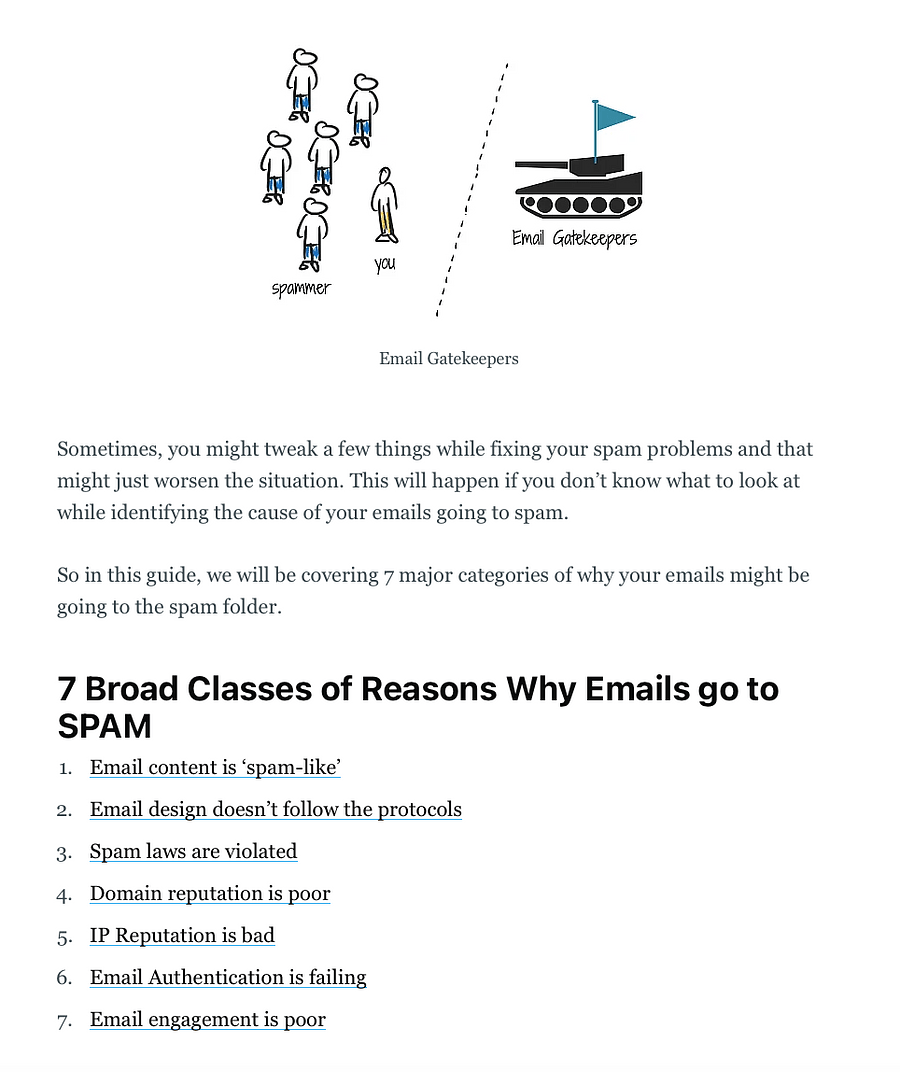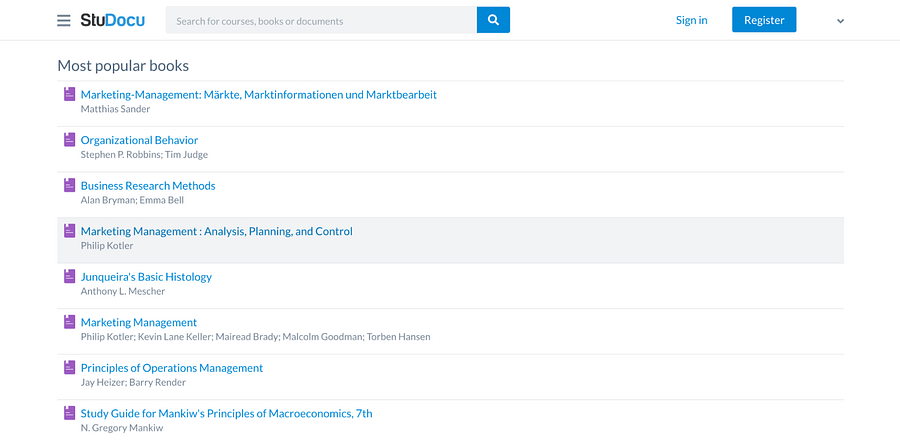Tech issues, accidental email sends, wrong promo codes, incorrect info, they’re almost impossible to prevent completely.
Issues like these can mar customer relationships when left unfixed. Thankfully, you can quickly patch things up with another email, granting you caught the error right away.
But is there an ideal time to send an apology email? Why is it so important? And how can you compose an email that conveys your sincerity about the mistake?
In this post, we’re to answer those 3 questions so that you can effectively craft an apology email whenever a mistake happens.
Read on to learn strategies you can apply and examples you can get ideas from. Let’s start by giving a short definition of what an apology email is.
Table of Contents
What Is An Apology Email?
An apology email is any message you send to your customers and potential customers that corrects a mistake in a previous email sent or a reply to a customer complaint about poor service or product they received.
The mistake could either be minor, like forgetting to include the coupon code or a link to a promotional email. It can also be major, like sending an email blast to the wrong audience or the wrong time-sensitive offer.
Don’t beat yourself too much, it happens with newsletters. If you want to keep your best foot forward, you can check out some of the best practices for newsletters.
But why is owning up to the mistake so important instead of just moving forward and pretending like the error was not a big deal for the people who received it?
Why You Need To Send An Apology Email
Whether it’s a promo, scheduling, app outage, or subscriber list mishap, sending an apology letter is vital. It can either make or break 3 things: your reputation, your business, or your brand.
Even a simple mistake, when left uncorrected can either cause people to unsubscribe to your list or think badly about your products and services. Indirectly, they’ll also feel that they’re not that important to you.
When you send an apology letter, you own the mistake and set things straight. People tend to be more forgiving with those who ask for it.
Not just that, they’ll feel more valued, and thus open a way for a healthy conversation which leads to a stronger relationship with your subscribers and best of all, the potential for higher conversions for your business.
But the fact is, timing is a weighty factor when it comes to getting a positive response from your apology email.
Take this for example:
You sent out an email campaign about a current discount for a certain service you offer. After sending the email, you realize you had 1 word misspelled and thought of sending an apology email for this tiny mishap. Let’s say you wrote “the” as “teh”.
The thing is, sending out an apology email for that 1 typo, a very minor mistake would likely not be received well. You’ll be clogging their inbox for non-important matters. Some will even view it as spam, moving them to unsubscribe.
But there’s a way to avoid the spam folder, here are 7 reasons why this happens and actionable solutions you can try.

When To Send An Apology Email
Before sending an apology email, here are 3 questions you should ask yourself first to evaluate if there’s a need to send one.
- Did my brand or business do something wrong to offend my audience?
- Will I be causing my audience confusion or inconvenience if I don’t make an apology email?
- Will sending an apology email erase any uncertainty my audience has of my brand?
If you answer “yes” to any of those 3 the questions, you need to send an apology email.
However, a generic apology email for all kinds of mistakes will defeat the purpose of sending one. Different mishaps call for different responses.
In general, an apology email can either be initiated or sent as a reply. Let’s consider instances that fall into these 2 categories. We’ll also give you samples of how the apology email should look like for each instance.
Initiated Apology
App/Software Downtime Apology Email
An app/software downtime apology email should give the users the why and when of the glitch so they’ll know what to expect moving forward. You can include what the glitch affected and what it did not.
And offer more information should they need to explore further. One idea is to give them a free webinar to get them informed thoroughly. If you’re considering this option, here is some webinar software you can choose from.
Let’s say you own an ERP software like iNecta.

Here’s how the apology email can look like:
Dear John,
You may have noticed the software won’t open on some browsers. Since yesterday, June 14, iNecta Food won’t run on Google Chrome and Safari. Microsoft Edge was unaffected by this glitch.
This glitch is an isolated case since we launched the software. We apologize for the inconvenience it brought to your business. We will provide you with an explanation of the problem and a solution should it happen again on our website. (add link)
If you need more details immediately, feel free to contact us.
Wrong Promo Code Apology Email
For a wrong promo code apology email you can convey how serious you’re taking the situation. You should admit to the fault and give them an explanation of what happened.
Here's how a wrong promo code apology email should flow:
Dear John,
I’m sending this email as an apology for our recent mistake.
We previously sent an email providing you with the promo code “TSX50” for a 5% discount when it should have been “TXS5”.
We know the confusion we caused can be upsetting. There was a miscommunication on our end but we assure you we’ve taken steps to double-check our promo codes before releasing them to you.
Security Notice
Since security has been breached, this email should convey seriousness, but on an optimistic note. You can start by providing a detailed explanation of the problem and offer a way to fix it.
Again you can own up to the mistake, give a sincere apology, and commit to a resolution.
It should sound something like this:
Dear John,
We’re emailing to tell you that we’ve just confirmed unauthorized access to our database. This access has already been blocked and we’re setting up additional changes to the infrastructure so that this will not happen in the future.
For this reason, we recently put a two-step verification in place for an additional security layer. We strongly recommend that you make use of this feature. For additional details on setting this up, you can visit the help center.
We deeply regret that this problem has arisen and you apologize for the inconvenience it brings you.
Apology As A Reply
This category caters to response emails when someone issues a complaint about a product or service. Usually, it can be resolved within the first reply, but sometimes it requires a couple of back and forths to get resolved.
In this section, we are going to give you sample apology emails that are sent as a response to an issue raised by a customer.
1st Reply: Our mistake, here’s what happened
For the first response you give to a customer, give them details of why they got a poor product or service. If there was truly a fault on your end, be clear about why it was your fault and apologize for it.
There’s no need to blur the lines and make them feel they’re at fault too. Take full responsibility for the issue. Don’t be too formal too, say it conversationally, just like when you’re talking to a friend.
If you’d like to improve your conversational skills, you can consider signing up for some conversational courses.
Here’s how you can do it:
Hi John,
Thanks for your patience while we got to the bottom of the problem. After discussing with my team, we realized we’re responsible for the issue, there was a glitch we haven’t thoroughly fixed yet.
Your trust is very important to us and we don't want to set you off track with your goals. Rest assured we’re fixing the issue so you can get back on track. We’ll also be giving you a full explanation of what happened.
We’re committed to proving our relationship with you is important, here’s what we think we should do moving forward: (insert plan)
Thank you for understanding.
1st/2nd Reply: We’re working on it
Assure the customer you’re doing what you can to fix the issue and that it’s a top priority for your firm. Send this reply to a customer to keep them updated when you’re still working on a fix.
Here’s what you can write:
Hi John,
I’m sorry about (insert issue). My team and I are digging up the problem and exploring the most effective solutions for you.
We want to assure you your issue is important for us and we’ll update you as soon as we get actionable solutions to fix your problem.
Thank you for your patience.
2nd/3rd Reply: Still a bit confused, help us understand the issue better
You can send this apology email when it’s taking time to find a solution to a customer’s issues. It’s best to be transparent while at the same time listing questions for them to answer that’ll help fix the issue faster.
Let’s take my favorite study app, Studocu as an example for that: You might find a book you need on their list but the version they have is not what you need.

In this case, keep it straight to the point but optimistic.
Here’s how:
Hi John,
Thanks for letting us know about the issue you’re having. We took the last 3 days assessing the problem and we appreciate the patience you have. Although we’re looking at different angles in fixing the issue and finding the right version you need, we still haven’t reached an actionable solution.
Here’s what we’ve tried: (bullet list of what you’ve tried)
We’re still working on a fix and your thoughts and experience with this issue can help us make sure we’re on the right page in fixing the issue.
Here are some questions you can help us with: (list questions)
Thank you again for your patience and we’re confident that with your insight we can find a resolution soon.
These are just samples of how you can craft an apology email. Some of the main points we’ve covered in the samples are: own up to the mistake, assure them you’re working on a solution, and thank them for their patience.
But there’s more. The next section will talk about how you can craft an effective and optimistic apology email. It’ll cover the basic process of what your apology email should follow.
How To Send An Apology Email
Mistake Diagnosis
Like a doctor, you should get a bird’ eye view of the situation to assess and identify the damage the problem has caused to our client.
This is an important element since there would likely be underlying issues the problem could cause.
Take for example in the case of a syncing malfunction for a business solution provider or mistake in the repricing by an Amazon repricer: the main problem would be no work could be done because the system is down. That will result in loss of time and income for the people relying on your services.
The underlying issue there would be a potentially reduced trust that can affect future relationships and conversions not just for you but for your customer as well.
Your customers want to make money online and that will always be an underlying issue to consider.
Taking note of that issue and incorporating that in the apology email will make the customer feel how serious you view the situation, assuring them you’re doing the best you can to remedy the problem.
Attach A Level Of Seriousness
Early in this post, we mentioned minor and major mistakes, simply, not all mistakes are equal.
When crafting your apology email, relay the level of seriousness you have in addressing the issue. It’s important not to view trivial mistakes like typos as important or to sugarcoat weighty problems like system glitches especially for serious industries like law firm marketing services.
Be transparent about where the issue falls on the spectrum. Here are 4 categories to guide you:
- Minor issues like typos: Sentence typos won’t hurt the business. While an apology email is not required, action must be taken to ensure typos can be avoided altogether.
- Technical mistakes like coupon code errors: those that can impede customer experience but can be easily resolved.
- Detrimental mistakes: more serious mistakes than technical mistakes. It can affect customer experience, reputation, and conversions.
- Real problems: these types of problems can have long-term effects. It can damage a whole organization’s reputation and revenue.
For example, a medical alert company emails a complaint to a medical alert review site stating the facts on the review are outdated, incorrect, or not consistent like in the example below.
This can fall under the detrimental mistakes category needing an apology email.
Once you’ve identified which category the issue belongs to, it’s time to start composing your apology email.
Basic Elements Of An Apology Email
You can call these the must-haves of every apology email. It doesn’t make the email generic, but it’s a pattern you can follow so it’ll be easier for you to insert the specific issue and resolutions to the problem a customer is facing.
1. Owning The Mistake
Don’t try to deflect the blame, doing so will only compound the problem. The main concern of those on the receiving end of the mistake is that you will address the issue, and owning the mistake assures them you’re going to find a solution.
2. Apologize
Frankly, that’s what the apology email is for, to say you’re sorry. You mustn’t dance around and articulate your apology clearly.
Like I said earlier, people will likely forgive those who admit the mistake and ask for an apology than those who don’t.
3. Respect The Customer’s Feelings
Being sincere goes a long way when it comes to accepting the blame for the issue.
Customers can sense insincerity even when you’re not face-to-face so you must take your tone and tenor seriously.
Put yourself in your customer’s shoes and understand how the issue has impacted them. Acknowledging that will add another level of sincerity to your apology email.
Focus on them, and avoid the “woe is me” approach.
4. Be Empathetic
Being empathetic connects you to the reader on a personal level. Assume what they feel about the matter by saying things like “I know this blunder is upsetting to you”. Doing so will help you come off not just as sincere, but also as reflective and thoughtful.
5. Explain How You’ll Address The Issue
Right after assuming what they feel about the matter, assure them you’re working out on things to fix the issue and prevent it from happening again in the future.
Sometimes, asking additional questions like “what else can I do to repair the damage done by the issue?” can help fix broken trust.
6. Explain What Happened
Make the customer feel your transparency about the issue. Explain to them what went wrong, telling them about the lapses on your part will help them calm down. It also tells them about your proactiveness in investigating what happened.
7. Acknowledge The Customers Goals
Remember, a company is using your product or service to reach its goals. Acknowledging how the mistake has impacted that will make them feel you take the matter seriously because your relationship with them is important to you.
If you’re a well-known SEO agency, working with a client and you made a wrong website audit, acknowledge that this search engine optimization mistake can affect their visibility on search engine results.
If the issue slowed down their company’s progress, acknowledge it because it will show them how sincere your apology email is.
8. Give Them An Action Plan
Explaining what happened is one thing, giving them a solution is another. Since you acknowledge the problem, it follows that you need to provide a solution.
Give them a clear plan on what steps you're planning to take. It gives them a sense of trust that you’re being transparent with them all the way through. It also assures them you’re on top of things and you’re working out on long-term solutions.
Conclusion
Following the examples and process set above is a sure way to craft an effective apology email. Be straightforward when it comes to owning the mistake and providing a solution and you’ll save your customer’s trust and show how much you value your business.

